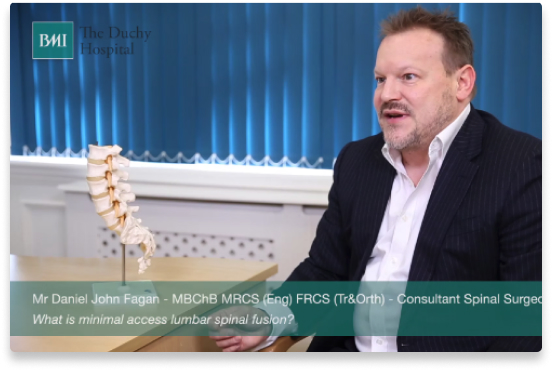Back Pain Treatment Services
At Spine Art, our expert spinal surgeon is dedicated to providing comprehensive back pain treatment options tailored to your specific needs. Whether you’re suffering from mild discomfort or severe pain, we’re here to help you find relief and regain control of your life. Don’t let back pain hold you back any longer. Take the first step towards a pain-free future by scheduling a consultation with our experienced team.
Common Back Conditions & Disorders
Common back conditions and disorders can significantly impact daily activities, work productivity, and overall quality of life. Conditions such as herniated discs, spinal stenosis, and degenerative disc disease can cause debilitating pain, stiffness, and limited mobility, making it challenging to perform routine tasks and maintain employment. Back pain can also disrupt sleep patterns, reduce physical activity levels, and contribute to psychological distress, affecting mental well-being and social interactions. Therefore, understanding and effectively managing these conditions is essential for restoring function, improving work productivity, and enhancing overall quality of life.
Book a consultation
Back Pain Causes & Risk Factors
Back pain can stem from a multitude of causes and risk factors, influencing individuals of various ages and lifestyles. These contributing factors include:
- Muscle Strain – Overexertion, improper lifting techniques, or sudden movements can strain back muscles, leading to acute or chronic pain. This is usually self-limiting but can take surprisingly long (3-4 months) to get better. A period of rest followed by physiotherapy or chiropractic treatment is very important in these cases.
- Spinal Disc Herniation – When the spinal disc protrudes through its tough outer shell, it can compress nerves nearby, causing severe pain, numbness, or weakness (typical of back pain and sciatica).
- Degenerative Disc Disease – Age-related changes in spinal discs, such as loss of hydration and failure under compressive loads, can contribute to disc degeneration, causing back pain and reduced mobility.
- Spinal Stenosis – The narrowing of the spinal canal may exert pressure on the spinal canal contents and nerve roots, resulting in pain, numbness and weakness when walking, or difficulty balancing. Leaning forward over a wall or shopping trolley often alleviates the symptoms which sounds odd but is typical of the condition.
- Vertebral Fractures – Fractures in the vertebrae, often due to trauma or osteoporosis, can cause severe back pain and may lead to spinal deformities if left untreated.
Symptoms of Back Pain
Recognising the patterns of symptoms of back pain is crucial for accurate diagnosis and effective management. These symptoms may include:
- Radiating Pain – Pain that extends from the back into the buttocks, legs, or feet, indicating potential nerve involvement or compression. This can also be “referred pain” – this is pain generated in the worn structures of the back but felt down the leg like sciatica. Thorough examination and an MRI scan helps us tell the difference between the two.
- Stiffness – A sensation of tightness or reduced flexibility in the back muscles, making movement uncomfortable or difficult.
- Muscle Spasms – Involuntary contractions of the back muscles, causing sudden, sharp pain and restricting movement. They can be so severe that sometimes the legs give way due to reflex inhibition – this is very worrying for patients but usually not serious. Persistent and severe muscle spasm is a sign that the back needs enforced rest, often accompanied by a course of regular anti-inflammatories (NSAIDS). Voltarol can be particularly effective in this situation.
- Weakness – Reduced strength or inability to perform certain movements due to underlying issues affecting the muscles or nerves in the back.
- Numbness – A loss of sensation or tingling sensation in the back, buttocks, legs, or feet, suggesting nerve involvement or compression.
Diagnostic Process for Back Pain
The diagnostic process for evaluating back pain typically involves a thorough assessment that encompasses many different areas. It begins with a comprehensive medical history assessment, where our expert surgeon gathers information about the onset, duration, and characteristics of the symptoms, as well as any relevant medical history, sporting history or previous injuries. Employment is also very relevant. Following this, a physical examination is conducted to assess range of motion in the back and hips, muscle strength, reflexes and sensation in the lower limbs. Importantly the sacro-iliac joints may be examined as a source of pain. Additionally, imaging studies such as X-rays, MRI (Magnetic Resonance Imaging), or CT scans may be ordered to visualise the spine and surrounding structures in detail, helping identify potential causes of back pain such as herniated discs, spinal stenosis, or degenerative changes. In some cases, diagnostic injections, such as facet joint injections or nerve root blocks, may be utilised to confirm the source of pain by temporarily numbing specific nerves or joints. Foraminal epidurals are also used as diagnostic and therapeutic procedure which are also a very effective form of treatment – particularly if a trapped nerve is driving the symptoms.
Non-Surgical Treatment Options
Back pain can significantly impact one’s quality of life, often requiring careful management to alleviate symptoms and promote healing. Non-surgical treatment options offer a diverse range of approaches tailored to individual needs and preferences. Here are some conservative modalities commonly used:
- Rest – Brief periods of rest can help reduce inflammation and allow the body to recover from acute episodes of back pain.
- Activity Modification – Adjusting daily activities and avoiding strenuous tasks can prevent exacerbation of symptoms and promote healing.
- Physical Therapy – Targeted exercises and manual therapy techniques can strengthen muscles, improve stability, and enhance overall spinal health.
- Chiropractic Care – Spinal adjustments performed by chiropractors aim to realign the spine and offload painful motion segments potentially reducing pain and improving function.
- Acupuncture – This traditional Chinese practice involves inserting thin needles into specific points on the body to promote pain relief and stimulate natural healing mechanisms.
- Medications (e.g., NSAIDs, muscle relaxants) – Nonsteroidal anti-inflammatory drugs (NSAIDs) and muscle relaxants may be prescribed to alleviate pain and reduce muscle tension in the acute phase,
- Therapeutic Exercises – Customised exercise programs designed by healthcare professionals can target specific areas of weakness or imbalance, promoting long-term pain management and prevention.
Surgical Interventions
Surgical interventions may also be considered to address underlying issues and improve quality of life. According to our expert team, here are some surgical options commonly employed:
- Lumbar Discectomy or percutaneous discectomy – This procedure involves removing part of a herniated disc, pressing on a nerve root, relieving pain, and restoring function.
- Spinal Fusion – Fusion surgery aims to stabilise the spine by joining two or more vertebrae together, often using artificial bone graft and highly engineered titanium implants, to alleviate pain caused by chronic degeneration (arthritis), instability, or deformity. This is done using minimal access techniques and image guidance.
- Laminectomy or Interlaminar decompression – Also known as decompression surgery, involves removing part of the lamina (the back part of the vertebra) to relieve pressure on the spinal nerve roots, typically for conditions like spinal stenosis.
- Artificial Disc Replacement – This procedure involves removing a damaged or degenerated disc and replacing it with an artificial implant to restore motion and function while reducing pain. This is much less commonly performed now as minimal access techniques have developed.

Contact Spine Art for Your Back Pain Treatment
Transform your life with Spine Art‘s comprehensive back pain treatment services. Our team of dedicated spinal surgeons and consultants is committed to providing personalised care aimed at alleviating your discomfort and restoring your mobility. Don’t let back pain dictate your life any longer. Take charge of your health today by scheduling a consultation with us. Together, we’ll work towards a pain-free future, allowing you to enjoy life to the fullest. Reach out now and embark on your journey towards lasting relief.
What is the cost of the procedure?
SpineArt fees due at the point of booking
Lumbar Facet Injections
A lumbar facet joint block is an injection of local anaesthetic (numbing medicine) into one or more of the small joints located along the side of each vertebrae on both sides of the spine in the lower part of the back. Steroid can sometimes be added for therapeutic effect which will dig you out of the rut of facet pain and can be combined with effective physiotherapy or rehabilitation.
View full price list£1,020*
*Prices correct as of July 2022. Please note these are fees due to SpineArt, hospital fees will be charged separately.
Want to talk to someone or book an appointment?
If your still unsure and have any questions, contact our receptionist Bev on 07539 330360 to arrange a consultation with Dan Fagan or email us at secretary@spineart.org.
Get in touch Book a consultation







